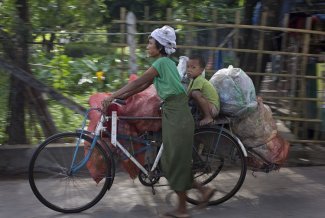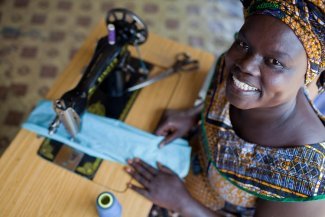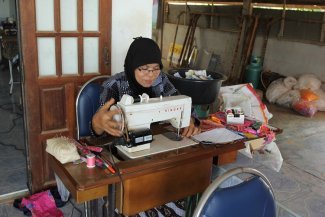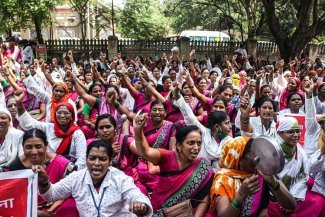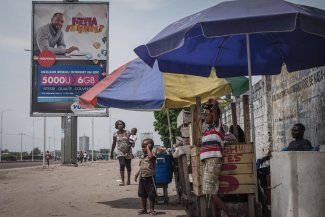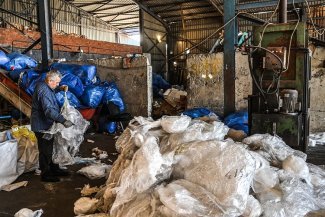


The Covid-19 pandemic is not just a health and economic crisis. It is also a crisis of care, which has impacted women the most. But not all women have been affected in the same way. Nor have they enjoyed the same levels of support through social protection measures and access to public services. Unlike those in the formal economy, informal workers have no paid family and sick-leave policies, or unemployment benefits. They frequently also lack the technology and opportunity to work remotely, which has enabled many white-collar workers to sustain their livelihoods through the pandemic. According to the International Labour Organization (ILO), some 90 per cent of workers in developing countries work in the informal economy.
A study conducted in 2020 by Women in Informal Employment: Globalizing and Organizing (WIEGO) on the impact of Covid on informal workers uncovered the lived experiences of over 2,000 informal workers in 11 cities in five regions – ranging from New York City to Accra, Ghana. The survey included waste pickers, domestic workers, home-based piece workers, and street vendors highlighting how the pandemic has impacted on their earnings, health, food security, household debt levels, and care responsibilities.
The analysis shows that, across all sectors, women who reported an increase in care responsibilities were working fewer days and earning less. In the peak lockdown period of April 2020, for example, such women were working about 33 per cent fewer days than other women. Even after restrictions eased, women with care responsibilities were only earning about 50 per cent of their pre-Covid levels. Though some men also reported an increase in unpaid care work, the effect on women’s earnings was more severe. A key factor behind this was the ‘childcare shock’ brought on by school and creche closures in the first wave of the pandemic – compounding the burden of care.
Across various sectors, workers experienced the impacts of Covid-19 differently. Women overall are segregated into the most vulnerable forms of informal work, earning lower incomes and spending more time on unpaid care work than men. These gendered differences must be understood alongside the type of work they do, where they work, and their employment and social status.
In the Indian capital of New Delhi, for example, waste pickers are typically members of religious minorities and social castes that face heightened discrimination due to cultural norms. They are marginalised into the most degraded slum areas, with few services and supports to assist them during the pandemic. Within this already stigmatised group, tasks are segregated by gender: women sort waste at home or in small sorting centres, while men generally undertake public waste collection. During Covid-19, sorting centres were closed, and workshop managers stopped employing sorters at these facilities. Along with the greater care burden they faced at home, women waste pickers saw greater income losses and a slower recovery in earnings than their male counterparts.
Among street vendors, women similarly experienced a steeper drop and slower recovery than their male counterparts. This reflected in part women’s greater care responsibilities, coupled with other gendered differences, such as the types of products they sell and their more tenuous roles in supply chains.
There were differences too in how domestic workers, who are mainly women and often, migrants, experienced the pandemic. In a sample of 55 domestic workers in Lima, for example, ‘live-out’ workers faced higher unemployment, while ‘live-in’ workers were trapped in deteriorating working conditions. As one live-out worker put it: “My employer doesn’t want me to come until the pandemic is over.” In contrast, a live-in worker explained that “employers have set conditions: if you leave, you’re not coming back, and if you stay, you cannot leave the house”.
Understanding how some workers face overlapping systems of discrimination will be key to finding effective Covid-19 response measures.
The WIEGO study and earlier research supported by Canada’s International Development Research Centre suggest that focusing on only one aspect of inequality at a time masks the real reach of the pandemic and its unequal impacts. Policy and programme interventions need to be based on a recognition that workers’ experiences vary, and some face many different forms of disadvantage that can include their gender, occupational sector, social class, and other factors. If not tailored to the varied needs and experiences, one-size-fits-all policy responses to the care crisis — such as those that benefit only workers in formal employment — risk leaving the most disadvantaged even further behind.
If pandemic recovery is to benefit women informal workers, we need to include their demands in the design and implementation of care policies alongside other economic strategies to recover their livelihoods.


